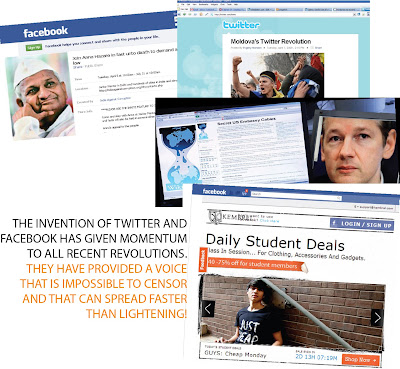let’s stop being exploitative and start being creative
Ask yourself the reason why, while feverishly flipping through this magazine, you’ve suddenly stopped at this particular article! Is it because you have religiously followed this section on marketing strategies for the past year? Well, is that so?!?
A man walked into a large room full of people. He was supposed to address them. However, no one was paying attention and it was too noisy to be audible to all. So he went up to a board that was kept there and wrote something. There was a sudden silence in the room as everyone waited for him to speak. The man started, “Now that I have your attention, I will start my talk...” All that he had written was “SEX,” in bold letters on the board and had managed to get the attention of every single person in the room. ‘Sex’ is one word, which arouses a lot of curiosity and has a strong psychological appeal. Is it true then that sex sells? Well, a recent study showed that sex in print advertisements improved the effectiveness of the advertisement, made the ad – and the product – more likeable, and increased the “purchase intent” – especially for men.
Products are everywhere, brands are popping out of every nook and corner screaming, “Buy me, Buy me!” How do you make sure your products outsell those of competitors? For that, you would necessarily need to have a clear understanding of “why” & “how” people buy.
Vance Packard, in his landmark book, The Hidden Persuaders, explains the shopping phenomena, which was researched by the Du Pont company. For years, this company had been surveying the shopping habits of American housewives. An interesting discovery was that only one shopper in five had a list of what he/she needed to buy. Yet, all shoppers managed to fill their shopping carts with lots of goodies. The simple shopping rule is – seven out of ten of today’s purchases are decided in the store, where the shoppers buy on impulse. The study found most of the shoppers in a “just-for-the-heck-of-it-mood” while visiting stores. One just needed to catch their eyes to up the chances of their buying the product! Marketers are thus using subliminal seductions and sexual come-ons to sell their products and keep the consumers hooked.
Women are being portrayed as those objects, which help you remain hooked to the advertisement and the product. Images of pretty and very often scantily dressed women have appeared in ads, even without any connection to the product being sold. For years, advertisers have used several tactics to get people interested in their products; they have used humour, peer pressure, self esteem and many other things – but using women as sex objects seems to be the most effective technique in attracting attention.
Earlier ads showed women in traditional homemaker and mother roles; but today, this has decreased a lot. Around 60% increase was observed in ads using women as decorative objects. One look at the various advertisements makes it clear how women’s bodies are used in order to grab the viewer’s attention. So much so that 38% of female characters in video games were scantily clad. Tomb Raider, after all, would not have been such a hit video game if it did not have Angelina Lara Croft Jolie dressing and looking the way she did in the Tomb Raider movie!
Calvin Klein once said, “Jeans are about sex.” Who would you have thought that trousers stitched out of material meant to make tents could metamorphose into such a phenomena! Both Brooke Shields and Levis jeans shot to fame when Brooke Shields appeared in the ad which claimed, “Nothing comes between me and my Levis!” Back home too, jeans seem to be turning up the heat in more ways than one. The Wrangler jeans ad showed a woman faced with the emergency of dousing a burning haystack. She quickly strips off her jeans and douses out the fire, as a group of men stare at her – mouths wide open. Second in the series showed her walk up to the boys and demand “drop your pants,” and throw some Wrangler jeans at them. The ad saw a radical increase both in the awareness of the jeans brand and in the temper of Sushma Swaraj (who demanded its immediate withdrawal).
When Kwality Walls Ice Cream wanted to promote its product, Feast Ice Cream Bar, the ad agency Lintas created a series of ads for them with a tag line, “Mate your stick.” Certain symbols like a car, a key, a stereo system etc. were embossed on the sticks of Feast Ice Cream. The first four people who were able to combine the symbols of ‘car’ and ‘key’ would win a Mahindra Classic vehicle and the first 50 people who could combine the symbols ‘music system’ and ‘treble clef’ would win a Sony Hi-fi music system. Basically, if you got two sticks, one with the ‘car’ symbol and the other with a ‘key’ symbol, you won the car. So the ‘car’ had to find it’s ‘key’, and the ‘treble clef’ had to find a ‘music system’. Hence, one stick was looking for the right mate. Their ads showed a young girl sizing up three men as she suggestively looked downwards and then turned her face in distaste. She finally approved of the third man and looked at the stick in her hand. The jingle in the background kept up the “Mate your stick” ruckus. The ads had to be pulled out quickly as they didn’t go down well with the public.
Abercrombie & Fitch, the American apparel manufacturers, came out with their catalogue titled ‘XXX Wet, Hot Summer Fun’, which featured boys and girls wearing nothing at all – not quite what you would expect from a catalogue meant to showcase the latest fashion clothing! Benetton too followed this strategy of showing shocking images instead of clothes to promote their brand. The Charlie perfume ad shows a couple walking down the street, very happy and satisfied in each other’s company. The woman then laughs, reaches over and pats the behind of the man. She is, after all, a “Charlie woman”. Almost all perfume ads have used sexual images, either subtle or blatant. Similarly, beer ads exploit men and women and their bodies to make the purchase of beer more ‘desirable’. From shampoos to cosmetics to toiletries, all products are being advertised using seductive women.
When marketers can’t figure out a good marketing and advertising strategy, they use “provocation” as a theme, which, they are sure, would always manage to grab eyeballs. No wonder a whole lot of tasteless advertisements are crowding the advertising horizon. Some advertisers, as a strategy use nudity to shock and stun the viewers and create a controversy. However, in the long run, this doesn’t seem a good move. You run the risk of offending viewers and turning them off completely.
Compare how males and females are depicted in advertising campaigns that use separate ads focusing on men and women. For example, both the Vuitton and Milk campaigns use a man and a woman to sell the same product, but note how the image of women are more sexualized than those of the men! You may attract men using sexual innuendos, but a team of researchers at the University of Florida concluded – the more seductive the model, the more it left the women bored and uninterested.
Laugh it off as a case of jealously or whatever, but if you have to sell to the woman, you should know what she wants. She is someone you cannot ignore. Surveys show that those are women who are the big spenders in the family. Out of the Rs.8,000 crore ad industry money, over 70% of the ad revenue on television came from ads that targeted women. It makes business sense not to offend her, after all, she buys for herself, the children and the house. So the fashion label ‘Guess’ has now changed its advertising campaign to include photographs of innocence and purity. Look around you, there are brands that have been top selling for years without using sexual advertising. One such company is Nike. Its creative ads have kept generations of youngsters hooked on.
Ads have to stop showing that women are nothing but beautiful and desirable. Media has to stop viewing girls as only sex objects. A women does not have to be always tall, slim, young, light skinned and perfect. Probably, ‘Dove’ soap’s “Real Women” campaign is trying to show just this. After all, we would not want our young girls to suffer from eating disorders, low self-esteem and depression – most of which are directly linked to the “image” they see and try to ape in advertisements.
Projecting just one aspect of their being is wrong, derogatory and unethical. There is much more to them. Over the years, they have achieved a lot, brought about changes in the system and have earned a place for themselves in the world. Advertising can no longer take advantage of a woman’s beauty. The job of advertising is to sell the product. If you rack your grey cells harder, you can come out with ideas which are more pleasant and effective. It’s time advertisers stopped being exploitative and started being creative.


Comments
Post a Comment